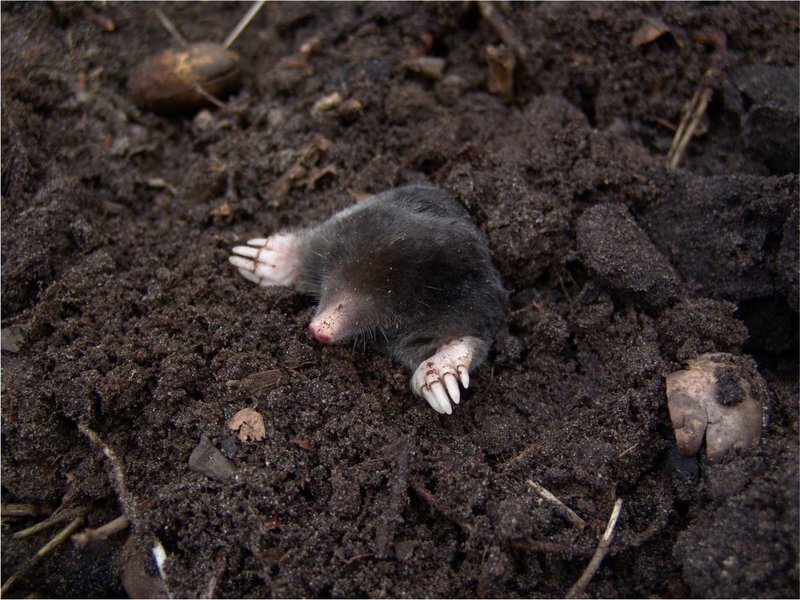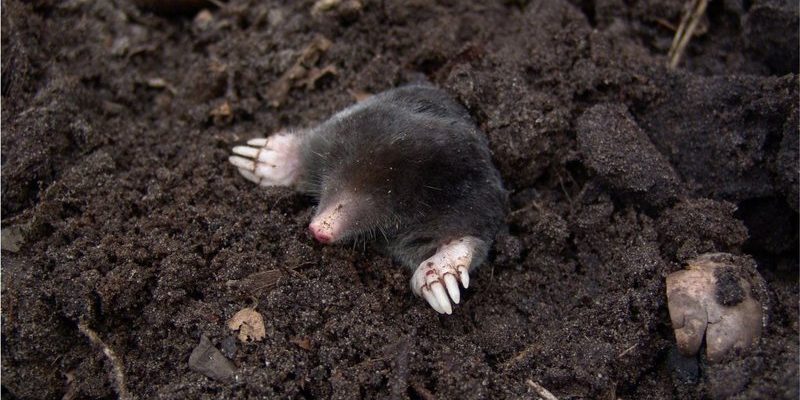
Think of moles as tiny excavators working tirelessly beneath the surface, creating tunnels and mounds as they go. Grub worms, on the other hand, are like a buffet for these little creatures, providing a meal that keeps them going. It’s like a delicate dance in your backyard, where each player has a role. So, let’s dig a little deeper into this connection and see how it all works.
What Are Moles?
Moles are small, burrowing mammals that are often seen as a nuisance in gardens or lawns. These creatures have short limbs and long, pointed snouts that make them look quite unique. They spend most of their lives underground, building extensive tunnel systems to find food and navigate their territory.
One of the fascinating things about moles is their lifestyle. They primarily feed on insects, worms, and, yes, grub worms. When you have moles in your yard, they’re actually doing a service by aerating the soil as they tunnel. However, their presence often raises alarms among homeowners who worry about the damage they might cause to gardens and lawns.
You might be wondering, why are moles so drawn to certain areas? Well, it usually comes down to the availability of food sources. If your lawn has an abundance of grubs, it’s like a five-star restaurant for these tunneling creatures.
What Are Grub Worms?
Grub worms are the larvae of various beetles, most commonly Japanese beetles and June bugs. They’re typically white, C-shaped, and reside in the soil where they feed on plant roots and organic matter. You’ll often find them just beneath the surface, which is where they become a tasty snack for moles.
These little critters can wreak havoc on your garden if their populations get out of control. Healthy grass and plants can start to die off if grubs are munching on their roots. Just think of them as little thieves stealing nutrients from your precious plants.
Grub worms have a life cycle that includes a transformation into adult beetles, but during their larval stage, they’re most vulnerable. That’s when moles come into play, as they tunnel through the soil in search of their next meal.
How Moles and Grub Worms Interact
The relationship between moles and grub worms is quite fascinating. Moles are primarily insectivores, and grub worms are one of their favorite snacks, acting almost like a buffet for them. When moles dig through the soil, they inadvertently help control the grub population, which can prevent potential damage to your garden and lawn.
This interaction highlights how ecosystems work. Moles, by eating grubs, help keep their numbers in check. If there are too many grubs, they can destroy grass and plants, but with moles around, their population can be lowered naturally. It’s like having a natural pest control system right in your backyard!
However, the presence of moles can sometimes signal larger grub problems, too. If you’re noticing a lot of mole activity, it’s worth checking if you have a high grub population that needs addressing.
Recognizing the Signs of Grub Damage
To understand how moles and grub worms are connected, you need to recognize the signs of grub damage in your yard. Here are a few indicators that might point to a grub infestation:
- Brown patches on grass: If your lawn starts to turn brown or looks unhealthy in certain spots, it could be a sign of grub activity.
- Loose turf: When you pull on sections of grass, if they lift up easily, it’s often a sign that the roots are being eaten away by grubs.
- Animal activity: Besides moles, other critters like raccoons or birds might dig in your yard looking for grubs, which can lead to even more damage.
By recognizing these signs, you can make informed decisions about whether to manage both moles and grubs. Addressing the grub issue can sometimes help reduce mole activity, too.
Managing Moles and Grub Worms
If you find that both moles and grubs are causing issues in your yard, you might wonder how to address the problem. Here are a few strategies to consider:
1. **Control Grub Populations:** Use beneficial nematodes or approved insecticides to target grub worms. This can reduce the food source for moles. Just be cautious about your methods and follow the instructions carefully.
2. **Encourage Natural Predators:** Attracting birds of prey, like hawks and owls, can help control the mole population naturally. They see moles as a tasty snack too!
3. **Create Barriers:** Physical barriers, like underground fencing, can keep moles from entering specific areas of your garden or lawn.
4. **Evaluate Your Soil Health:** Sometimes, improving soil health can lead to a more resilient lawn, reducing the grub population naturally. Healthy grass can recover better from any grub damage.
Finding the right balance is key when it comes to managing these critters. Remember, moles are not inherently harmful; they do help aerate the soil. However, an overabundance of both moles and grubs can create problems.
Why This Matters for Your Lawn
Understanding the connection between moles and grub worms is vital for maintaining a healthy lawn. It’s all about balance. If you notice too many moles, it might indicate an underlying grub problem. Conversely, tackling grubs can help you manage mole activity.
In gardening, knowledge is power. Knowing how these creatures interact helps you make smarter decisions about pest management. Whether you choose to control one or both, being informed will lead to a healthier yard overall.
So, the next time you see those little dirt mounds or spot a mole, you’ll have a better idea of what’s going on below the surface. It’s an intricate relationship that’s worth paying attention to.
In conclusion, moles and grub worms have a unique connection that can affect your yard’s health. By understanding this relationship, you can take steps to manage both, creating a thriving outdoor space. Embrace the balance of nature in your backyard, and your plants will thank you!

